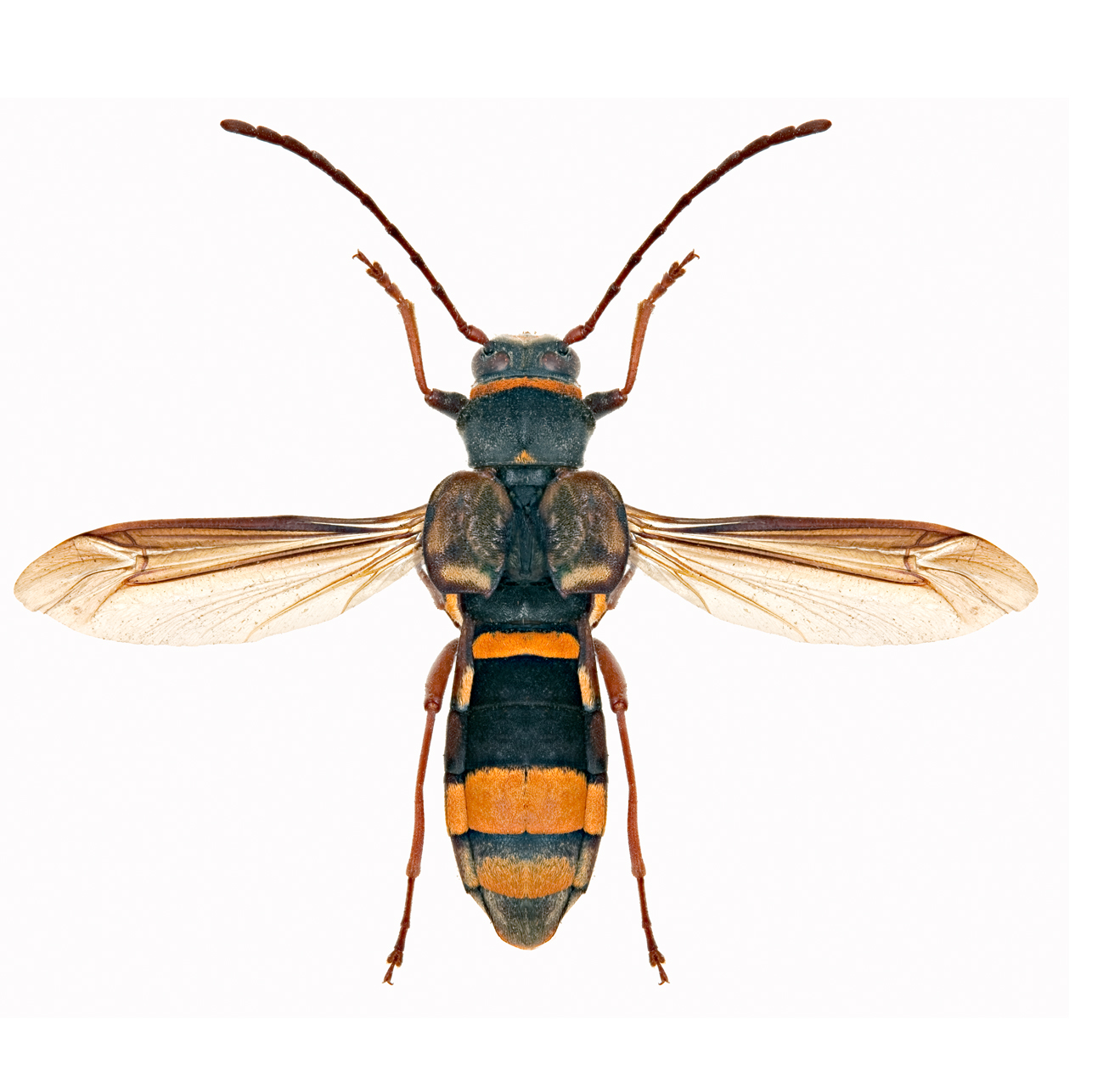By Andrea Wild
Legend has it that Titanus giganteus – a longhorn beetle from the Amazon – can snap pencils in half. Clearly, these are no ordinary beetles! Thanks to a new book, Australian Longhorn Beetles, you can learn more about these fascinating creatures.
Many longhorn beetle species are listed as invasive pests (no, not due to the risks posed to our country’s pencil stocks). Their larvae develop inside living or dead plant tissue, often in damaged or dead trees. When this happens in natural woodlands, it speeds up the decay of rotting wood and helps circulate energy and nutrients in ecosystems, which are important and beneficial processes. But when longhorn larvae develop in timber destined for housing, or in healthy forest or ornamental trees, we have a problem. They can also spread nematodes (little worms) that can cause diseases in other beneficial insects.
This longhorn beetle, Hesthesis sp., mimics a wasp. Australian National Insect Collection. Image: Cate Lemann, CSIRO.
Longhorn beetles are not necessarily easy to recognise, despite their long horns (or antennae, really). They come in all different shapes, sizes and colours – not all longhorns even have long horns. Some of them mimic unpalatable beetles, stinging ants and wasps. There are over 33,000 different longhorn species worldwide, including 1400 known in Australia. These factors combine to make the task of identifying possible invasive species a tricky one!
Yet despite the threat they pose to Australian industries, and their appeal to both professional and amateur entomologists, longhorns have been neglected for a very long time. Describing and understanding them has been a huge scientific challenge but now the Australian longhorns have got their own book, complete with colour portraits in their natural habitats.
Australian Longhorn Beetles is the first in a series of three volumes dedicated to the Australian Cerambycidae (that’s their real name) by authors Adam Slipinski and Hermes E. Escalona of CSIRO. The book walks us through the biology, morphology and phylogeny of Australian longhorns, all 1400 different species of them.
Dr Adam Ślipiński and Dr Hermes E. Escalona, with trays of longhorn beetles at the Australian National Insect Collection. Image credit: Chris Manchester, CSIRO.
Australian Longhorn Beetles represents around three years work by the authors. The first half of that was spent gathering material for the book from museums around the world. But around 80 per cent of specimens needed for the book were found in the Australian National Insect Collection in Canberra, which forms part of the Australian National Biological Collections Facility.
Australian Longhorn Beetles was published by ABRS, Canberra and CSIRO Publishing, Melbourne.
Longhorn image gallery:




24th April 2021 at 3:05 pm
I’ve found a couple here on Big Island, HI. Do they have predators? What eats them? Any suggestions on how to keep them from killing my fruit trees?
Desperate in Hawaii.
16th March 2014 at 8:09 am
Hi Chris or Andrea,
I’ve found a couple of my own longicorns – see http://arovingiwillgo.wordpress.com/2014/03/15/my-little-longicorn/ and http://arovingiwillgo.wordpress.com/2012/02/25/four-of-10-quintillion/
I’m very curious as to why the first one above is called a “sheep” longicorn. Do you have any idea? (Common names are a bit of a bugbear, I know.)
Thanks,
Joy
20th March 2014 at 3:28 pm
Hi Joy
Not too sure about the sheepy name but I’ve had one of our entomologists, Kim Pullen, look at your identifications on your blog. He says the second one is spot on but ‘my little longicorn’ is actually Disterna plumifera.
Happy blogging!
Chris
21st March 2014 at 8:04 am
Thanks so much, Chris. I’m doubtful about the sheepy name, too. Would much rather stick to the scientific one, which you have given me. I’ll correct my blog post. By the way, I just got my copy of CSIRO’s Australian Beetles Vol 1, which is pretty awesome.